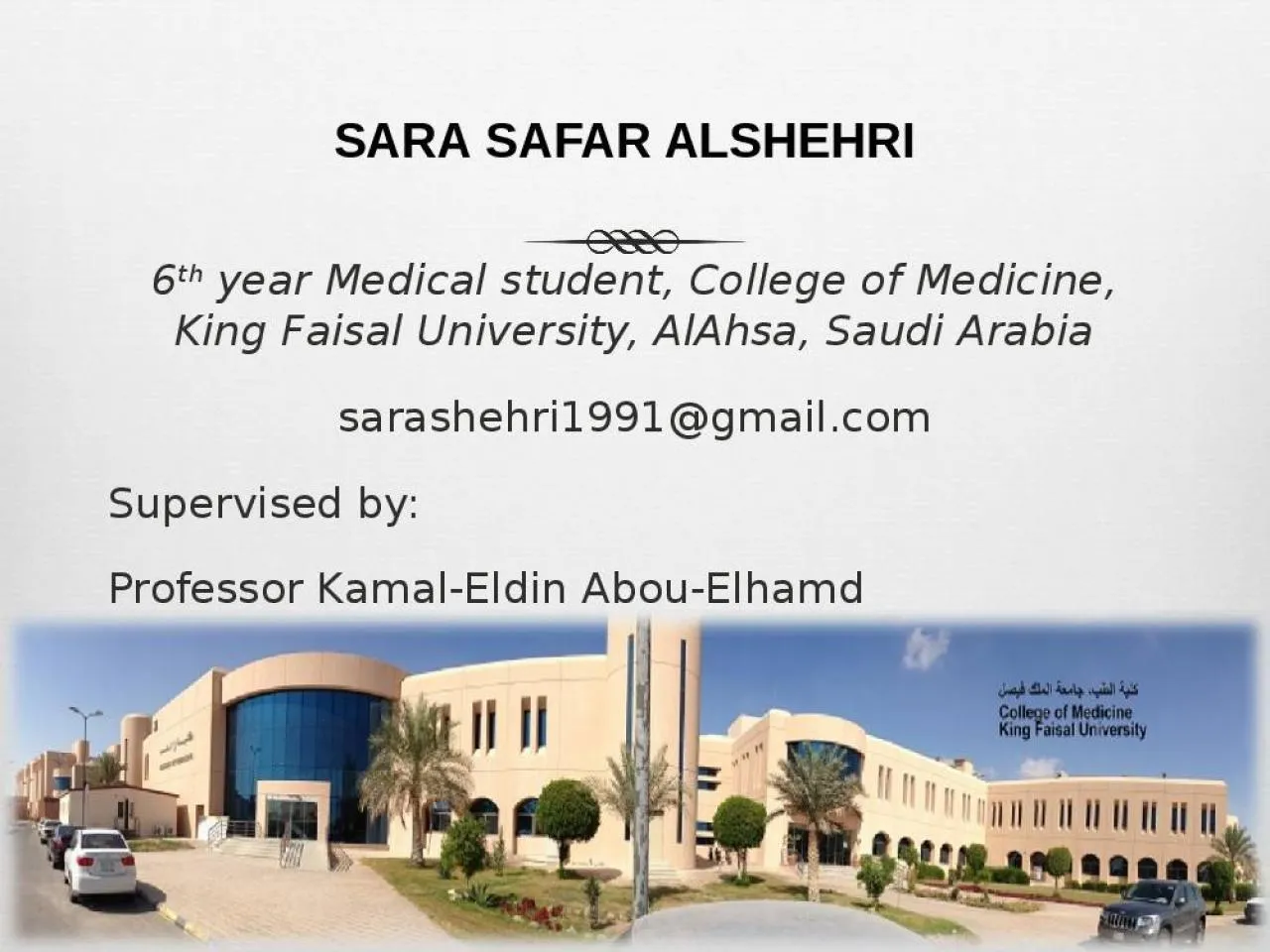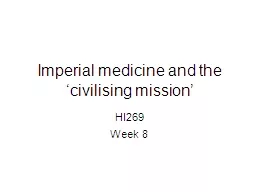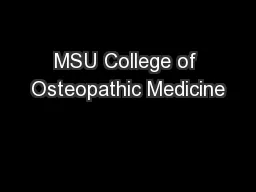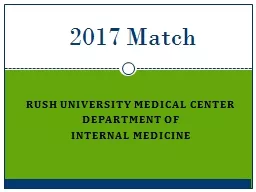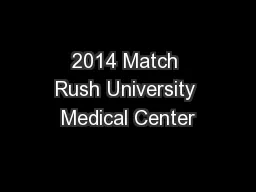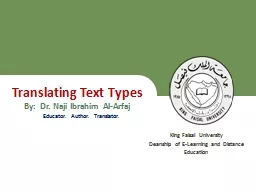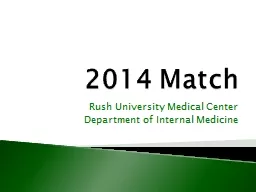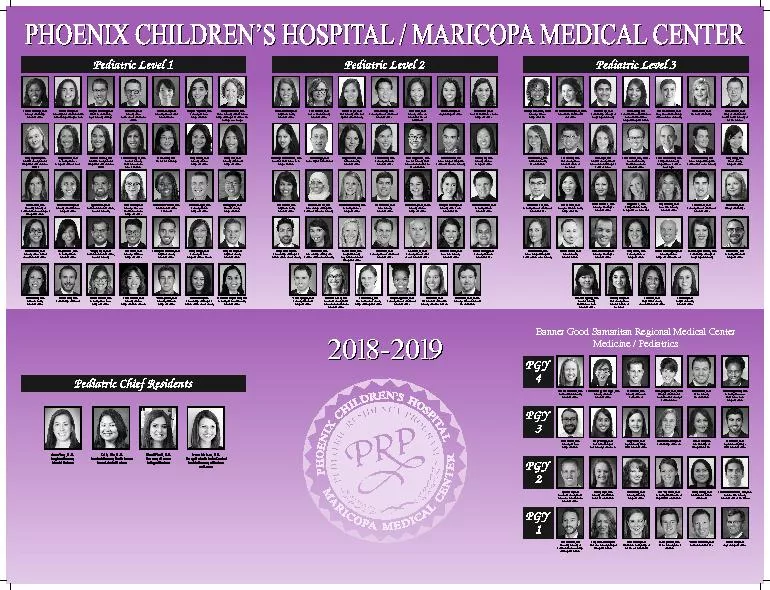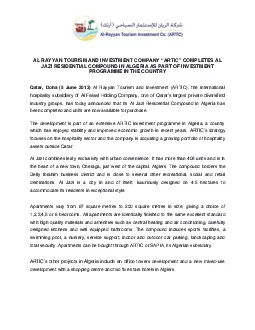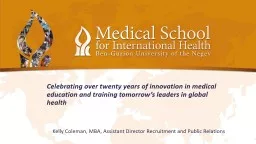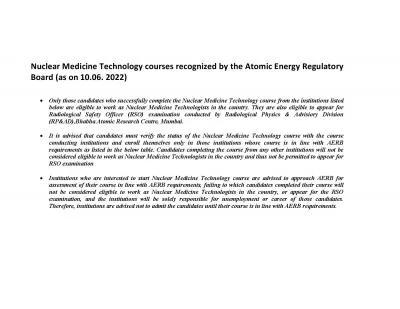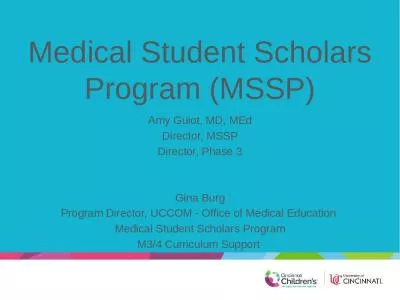PPT-6 th year Medical student, College of Medicine, King Faisal University,
Author : skylar | Published Date : 2022-05-17
AlAhsa Saudi Arabia sarashehri1991gmailcom Supervised by Professor Kamal Eldin AbouElhamd SARA SAFAR ALSHEHRI Is Marriage a Risk F actor for Allergic Rhinitis
Presentation Embed Code
Download Presentation
Download Presentation The PPT/PDF document "6 th year Medical student, College of ..." is the property of its rightful owner. Permission is granted to download and print the materials on this website for personal, non-commercial use only, and to display it on your personal computer provided you do not modify the materials and that you retain all copyright notices contained in the materials. By downloading content from our website, you accept the terms of this agreement.
6 th year Medical student, College of Medicine, King Faisal University,: Transcript
Download Rules Of Document
"6 th year Medical student, College of Medicine, King Faisal University,"The content belongs to its owner. You may download and print it for personal use, without modification, and keep all copyright notices. By downloading, you agree to these terms.
Related Documents

